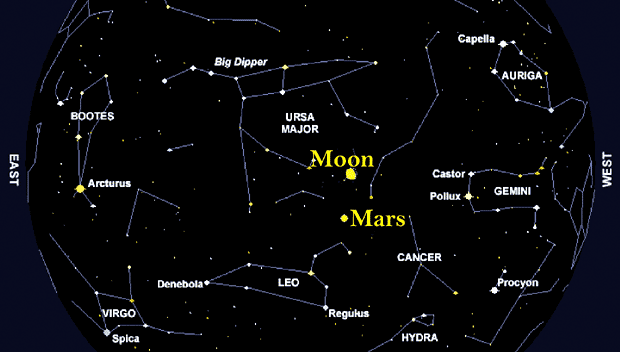
Night sky on 2 September 11PM
Nepali Times begins a monthly review of the night sky which will be presented by amateur astronomist Kedar Sharma Badu of the Pokhara Galileo Astronomical Society on the last Friday of every month.
The growing popularity of astrology in Nepal (every tv channel devotes prime time to zodiacal forecasts) is not matched by a proportional interest in astronomy. The two are linked: astrology is based on serious study of the night sky with measurements of the movement of the planets vis-?-vis the constellations.
As time passed our early astronomers transformed themselves into royal astrologers and converted the science of astronomy into fatalistic astrology. However, over the past few years interest in astronomy in Nepal has grown, well, astronomically. Because of its altitude and relative low light pollution Kathmandu offers ideal views of the night skies.
So let's begin. It's always difficult for a novice to differentiate stars and planets. Here are some clues: planets don't have their own light, they reflect the light of the sun, planets are generally found near the ecliptic path of the sun, stars don't change their positions relative to one another whereas planets are seen to move from one constellation to another.
This month look out for the following:
. Jupiter (with Venus) is visible low in the western sky after sunset in the constellation Virgo. With a small telescope you can even see its equatorial bands and the great red spot as well as the four Galilean moons.
. Saturn lies in constellation Cancer and is visible in the hours before dawn in the east-northeast. It rises soon after 2AM at the end of the month. With a telescope you can easily spot its moon, Titan. If you are in a high and dark place, you can even see moons Rhea, Dione and Tethys.
. Mercury shines very low in the pre-dawn sky looking east-northeast during the first week. On 4 September, when it rises an hour before the Sun, it will lie just one degree away from the star Regulus (Magha) in Leo.
. Mars rises by 10:30 PM at the start of the month and shines brighter and brighter as it comes closer and closer to the earth. Though its angular size will be smaller than in August 2003 (when it passed closest to Earth in 60,000 years) it will be significantly higher in the sky and clearly visible.
. Venus now appears as an 'evening star' in the west-northwest. On 1 September it will be just 1.2 degrees to the lower left of Jupiter. It will not rise particularly high in the sky but will drift southwards as the month progresses.
kedarbadu@yahoo.com


